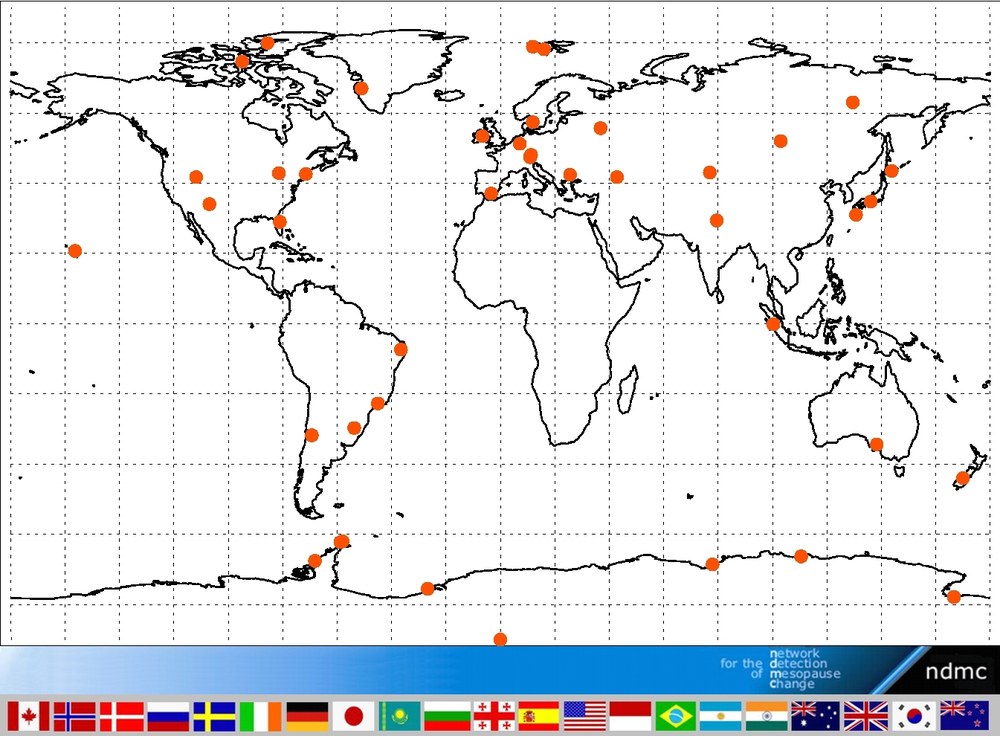“Focus on hemispheric asymmetries and planetary waves” - First NDMC-campaign successfully completed

From September 01 to October 31, 2009, the first global NDMC (Network for the Detection of Mesopause Change) measurement campaign has been successfully conducted; over 20 members of the international NDMC association participated in this global experiment. The main objective of this campaign was to investigate hemispheric asymmetries and planetary wave activities in the mesopause region deriving the intensity and temperature from the OH and O2 emissions in the airglow layer using optical instruments such as spectrometers and photometers. In addition, satellite-based measurements are considered. The measurements of the IR-spectrometers GRIPS, which are routinely operated by the German Remote Sensing Data Center (DLR-DFD) at DLR in Oberpfaffenhofen, the Environmental Research Station Schneefernerhaus at the Mountain Zugspitze and at the Meteorological Observatory Hohenpeissenberg, are integrated in the campaign.
The World Data Center for Remote Sensing of the Atmosphere (WDC-RSAT), which is hosted by the German Remote Sensing Data Center (DLR-DFD) has been designated as the NDMC data center and served as the data and communication platform during the campaign. The scientific results of the campaign will be presented and discussed at the next NDMC Meeting in May, 10-14, 2010.
The Network for the Detection of Mesopause Change (NDMC) is a global program with the mission to promote international cooperation among research groups investigating the mesopause region (80-100 km) in order to reliably detect and monitor climate change signals. NDMC will conduct regular global NDMC campaigns once a year usually at the equinox period focusing on the coordinated investigation of atmospheric variability at all time scales and the development of improved measurement methodologies, analysis and modelling techniques. The initial emphasis is on mesopause region airglow techniques utilizing the existing ground-based and satellite measurement capabilities.
